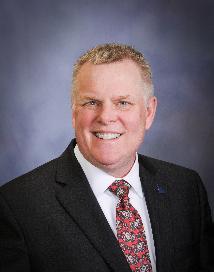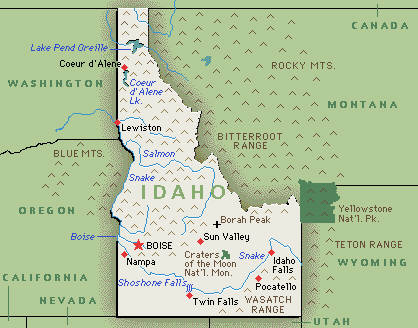
Sen. Nelson
Idaho internet access is inadequate to support tele-learning services, hurting the state’s ability to move towards online education as a result of the COVID-19 pandemic.
State Sen. David Nelson (D-Boise) told his constituents that “now, more than ever, Idahoans need reliable broadband.”
At the moment, they are not getting it.
Nelson:
“The Moscow School District is providing instruction online for middle and high school students but about 20% of students don’t have strong enough Wi-Fi or can’t afford the internet access needed for classes at home. To make online learning available to all students, Moscow School District has turned school parking lots into Wi-Fi hot spots and is providing wireless hot spots to some students. In the Potlatch School District, they have distributed 300 laptops and Chromebooks, but 20% of kids don’t have internet access. Potlatch is also creating Wi-Fi hot spots for some families.
“In mountainous Benewah County, St. Maries School District has a harder job. Cell service is spotty and line-of-sight internet connections are hard to come by. More than 70% of St. Maries students and teachers do not have access to reliable internet. The school district found they must send home weekly packets because they cannot do online instruction. St. Maries teachers work in their classrooms daily because neither they nor their students have reliable internet for online teaching. Instead, the teachers spend their time creating the paper worksheets for families to pick up.
“St. Maries students only get packets, while other schools teach online. Does that live up to Idaho’s constitutional requirement of a general, uniform, and thorough system of public, free common schools? Idaho needs more investment in broadband infrastructure, but we aren’t going to be able to fix this in the midst of a crisis. According to Kamau Bobb Google, educators must address the needs of diverse learners. I wish we had been investing in broadband infrastructure instead of cutting taxes significantly when times were good.
“Our limited, unreliable broadband is often overtaxed. Internet that was already struggling to serve our communities is now unable to keep up with the unprecedented demand from educators, people working from home, families ordering groceries online, and nearly every other Idahoan using the web to stay connected. Even the time to clear a credit card payment at a grocery store has increased.”
 Internet access in rural states like Idaho is mostly a mixture of cable internet in larger cities and towns and DSL service in suburban areas. Rural communities often have to rely on wireless internet, where available, or satellite internet access. A few communities have a co-op utility that doubles as a broadband provider, but in most cases rural Idaho only gets what CenturyLink, Frontier, and other telephone companies are willing to provide.
Internet access in rural states like Idaho is mostly a mixture of cable internet in larger cities and towns and DSL service in suburban areas. Rural communities often have to rely on wireless internet, where available, or satellite internet access. A few communities have a co-op utility that doubles as a broadband provider, but in most cases rural Idaho only gets what CenturyLink, Frontier, and other telephone companies are willing to provide.
“Last year, the governor’s Broadband Task Force found that North Central Idaho has the least access to functional broadband in the state,” Nelson noted. “Since schools have closed due to coronavirus, North Idaho school districts are experiencing the consequences of Idaho’s lack of investment in broadband infrastructure.”
After years of trying to convince private telecom companies to do the right thing by their customers and expand internet access, Nelson points out the current COVID-19 crisis is a perfect example of why states like Idaho can no longer afford to wait.
“The coronavirus pandemic has made it more obvious than ever that reliable internet access is a public utility that all Idahoans need,” Nelson said.


 Subscribe
Subscribe